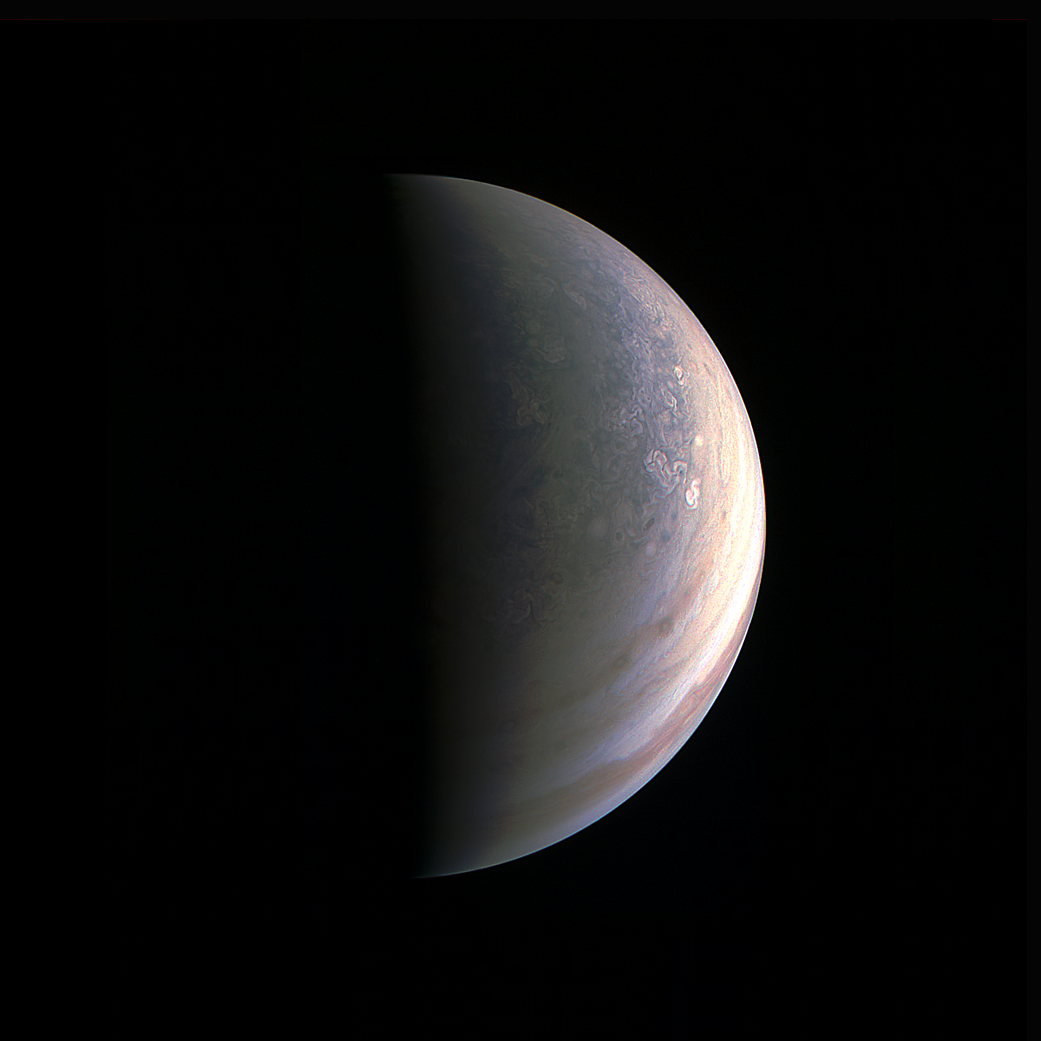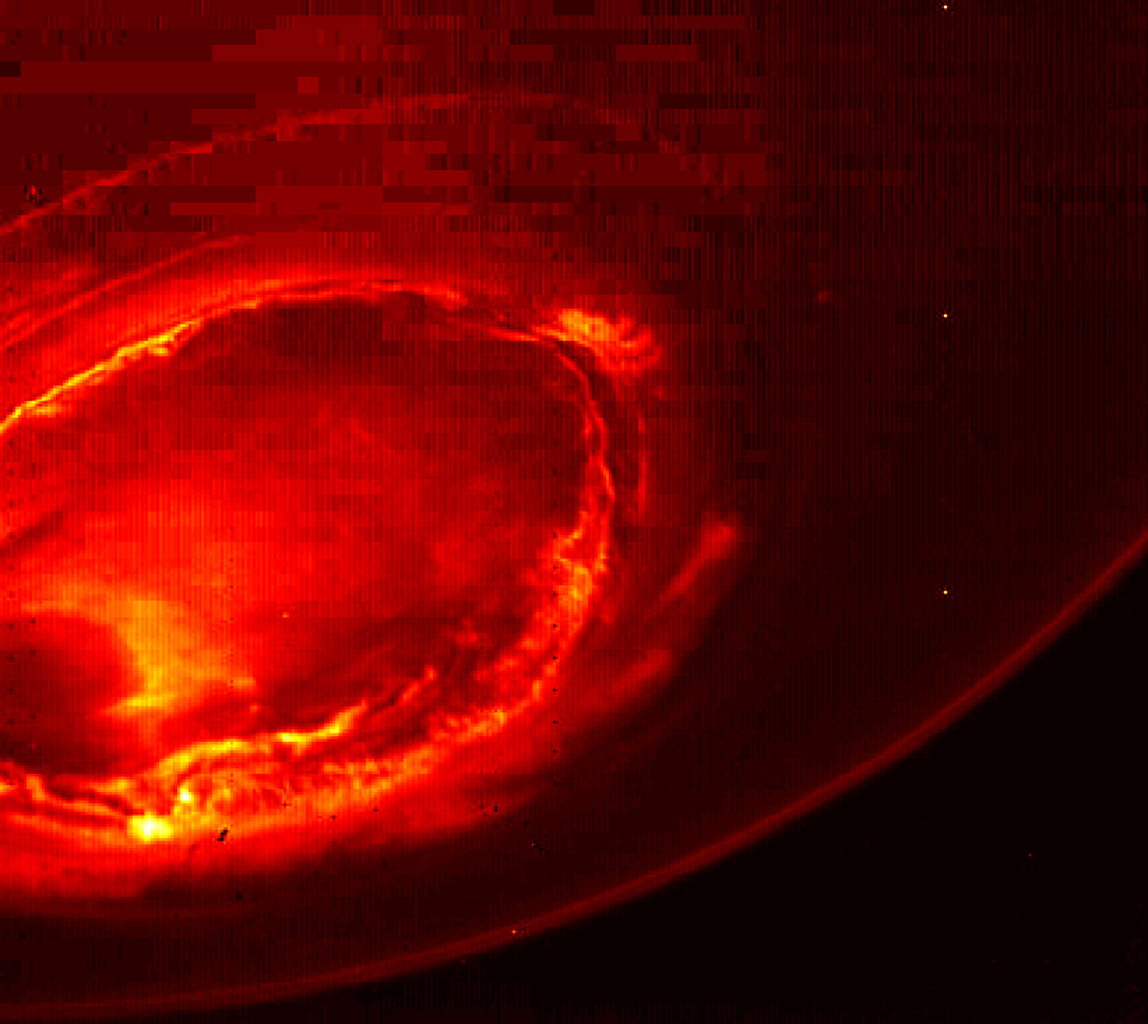
NASA released the first-ever images of Jupiter’s north pole on Friday after the agency’s Juno spacecraft completed a fly-by of the planet last weekend, revealing unique characteristics of the solar system’s largest planet.
The weather activity and storm systems depicted in the images are unlike anything seen before on gas-giant planets, NASA said. The spacecraft, which arrived at Jupiter on July 4, traveled about 2,500 miles above Jupiter’s clouds.
“First glimpse of Jupiter’s north pole, and it looks like nothing we have seen or imagined before,” said Scott Bolton, principal investigator of Juno from the Southwest Research Institute in San Antonio, according to NASA. “It’s bluer in color up there than other parts of the planet, and there are a lot of storms. There is no sign of the latitudinal bands or zone and belts that we are used to—this image is hardly recognizable as Jupiter. We’re seeing signs that the clouds have shadows, possibly indicating that the clouds are at a higher altitude than other features.”
Read more: Why NASA is Legally Required to Go to Jupiter—and Why That’s Good
The Juno spacecraft will study Jupiter during the course of 36 more flybys.

More Must-Reads From TIME
- The 100 Most Influential People of 2024
- Coco Gauff Is Playing for Herself Now
- Scenes From Pro-Palestinian Encampments Across U.S. Universities
- 6 Compliments That Land Every Time
- If You're Dating Right Now , You're Brave: Column
- The AI That Could Heal a Divided Internet
- Fallout Is a Brilliant Model for the Future of Video Game Adaptations
- Want Weekly Recs on What to Watch, Read, and More? Sign Up for Worth Your Time
Write to Katie Reilly at Katie.Reilly@time.com